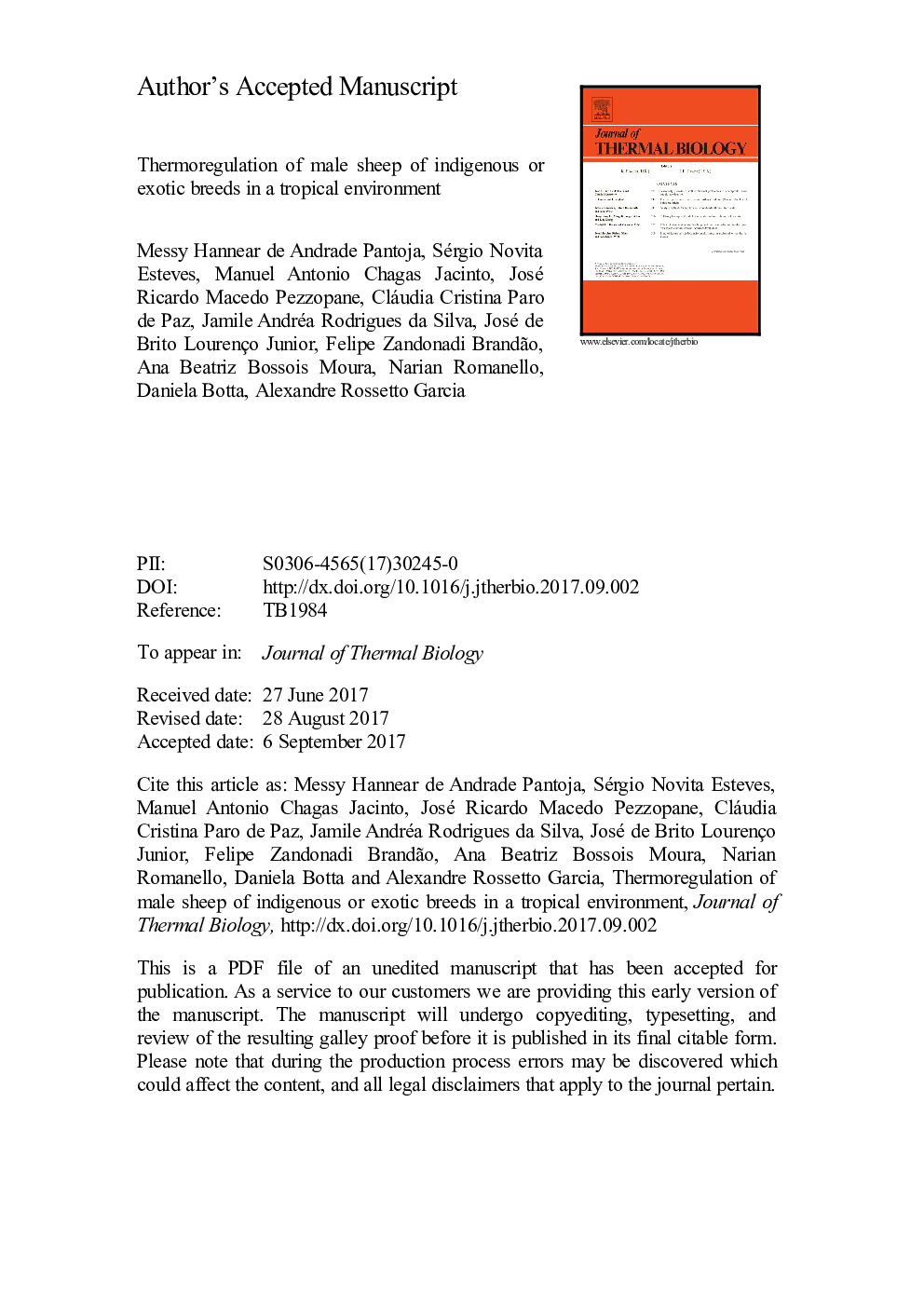| کد مقاله | کد نشریه | سال انتشار | مقاله انگلیسی | نسخه تمام متن |
|---|---|---|---|---|
| 5593369 | 1571079 | 2017 | 28 صفحه PDF | دانلود رایگان |
عنوان انگلیسی مقاله ISI
Thermoregulation of male sheep of indigenous or exotic breeds in a tropical environment
ترجمه فارسی عنوان
تنظیم کننده ترمیم گوسفندان نر نژاد بومی و عجیب و غریب در محیط گرمسیری
دانلود مقاله + سفارش ترجمه
دانلود مقاله ISI انگلیسی
رایگان برای ایرانیان
کلمات کلیدی
موضوعات مرتبط
علوم زیستی و بیوفناوری
علوم کشاورزی و بیولوژیک
علوم کشاورزی و بیولوژیک (عمومی)
چکیده انگلیسی
Climate change has intensified the frequency of heat waves in the world, thereby exposing farm animals to stressful conditions. For better productive performance it is important to identify the most resilient genotypes. Thus, our objective was to evaluate the thermoregulatory responses of rams of tropical indigenous (Morada Nova and Santa Inês) and exotic breeds (Dorper and Texel), by monitoring the environmental and physiological indicators related to heat tolerance. The experiment was carried out in a tropical climate region (Cwa), in Brazil, for twelve months, which comprised spring, summer, autumn and winter. Thirty-three rams were divided into groups: Morada Nova (MN; n=8, red-coat), Santa Inês (SI; n=9, black-coat), Dorper (DO; n=8, white-coat) and Texel (TX; n=8, white-coat). The microclimatic variables were monitored, and the THI and BGHI comfort indices were calculated. Coat thickness and body surface temperatures were measured monthly, and serum triiodothyronine-T3 measurements and complete blood tests were performed. The physiological variables were evaluated every fifteen days and skin micro-biopsies were performed in the summer and winter for histological evaluation. During the warmer seasons, the THI and BGHI reached values that indicated thermal discomfort. TX showed higher coat thickness throughout the year, increased physiological variables related to thermolysis, and reduced T3 (P < 0.05). The internal temperature was permanently lower in the MN, SI and DO (P < 0.05). The body surface temperatures were affected by the coat characteristics and wool length. Hematological parameters varied in the seasons with the highest thermal conditions (P < 0.05). The MN showed larger sweat glands, while the area occupied by the sweat glands was higher in the SI. The DO showed higher hair density in the summer and winter (P < 0.05). The results indicated that the MN, SI and DO breeds overcome the thermal challenge more easily throughout the seasons due to specific adaptive morphological and physiological characteristics.
ناشر
Database: Elsevier - ScienceDirect (ساینس دایرکت)
Journal: Journal of Thermal Biology - Volume 69, October 2017, Pages 302-310
Journal: Journal of Thermal Biology - Volume 69, October 2017, Pages 302-310
نویسندگان
Messy Hannear de Andrade Pantoja, Sérgio Novita Esteves, Manuel Antonio Chagas Jacinto, José Ricardo Macedo Pezzopane, Cláudia Cristina Paro de Paz, Jamile Andréa Rodrigues da Silva, José de Brito Lourenço Junior, Felipe Zandonadi Brandão,
